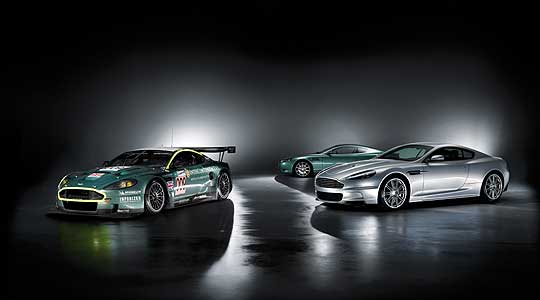
In the first of a new series of occasional articles by automotive design consultant Chris Hrabalek, we take a close look at the styling of the Aston Martin DBS.
The Aston Martin DBS V12 is a significant model in the history of the British sportscar brand, as it was the first new design to leave the sketchbooks of Marek Reichman, Aston Martin’s then newly appointed Director of Design, for arguably the marque’s most important customer: James Bond, aka 007.
It is not the first time that the ‘DBS’ name has been chosen by Aston Martin, nor the first time that Mr. Bond has driven one, for that matter. Last time around, in the hands of one-time-only Bond actor George Lazenby, the DBS was not only the British spy’s company car but the vehicle in which his newly wed wife, Tracy Bond, was tragically assassinated.

No such tragedies this time, however. Although, at one point, James Bond’s heart stops beating in the new DBS, for most Aston enthusiasts the heart rate must surely accelerate. Design-wise, the DBS V12 might not be as revolutionary as it is evolutionary but, as this derivative is based on the firm’s magnificent DB9 model, it would have been almost impossible to come up with a result short of aesthetic perfection.
Dr. Ulrich Bez, Aston Martin’s CEO, once described the DBS as ‘explosive power in a black tie’. It’s a phrase he must have stolen from Daniel Craig’s casting profile, as I would personally argue that this description is more suited to the actor at the wheel than to the exterior design of the DBS. The exterior modifications certainly transform the DBS into the most aggressively styled Aston Martin since the 1998 Vantage V600 – a car where the stylist took the design translation of the bristling bull-nostrils a bit too literally – but the DBS is clearly more Iron Man suit than it is black tie.
The exterior design of the Aston Martin DBS V12 is dominated by flared wheelarches, power bulges, air inlets and outlets, as well a number of other visual ‘design steroids’. Rather than taking inspiration from the clean lines of Aston Martin’s 50s and 60s icons, the transformation from DB9 to DBS was clearly more influenced by the successful DBR9 and DBRS9 race cars.

It’s obvious that it was not possible for Marek to reinvent the automotive tuxedo with this car. His brief was to muscle-up the DB9 donor car, a brief which has clearly been met with the DBS. Imagine the physical transformation that one would expect of George Clooney, if he were to star in a new Terminator movie, and you get the idea.
In any case, James Bond took the decision to return in another (or repaired) DBS V12 to the big screen this autumn. This is very unusual, as he rarely uses the same model in more than one adventure. The last time this happened was with the iconic Aston Martin DB5, but he must surely have his reasons. Although the new DBS is clearly not as elegant nor timeless as the DB5, it does have near-perfect proportions and surfacing, which make it an instant automotive classic; with or without an ejector seat.
Chris Hrabalek is a director of Fenomenon Ltd, a holistic design consultancy working with OEMs from the US, Europe and Russia, as well as handling sub-contracts for design houses with deliverables in China and Japan.
Text: Chris Hrabalek
Photos: Aston Martin
ClassicInside - The Classic Driver Newsletter
Free Subscription!



